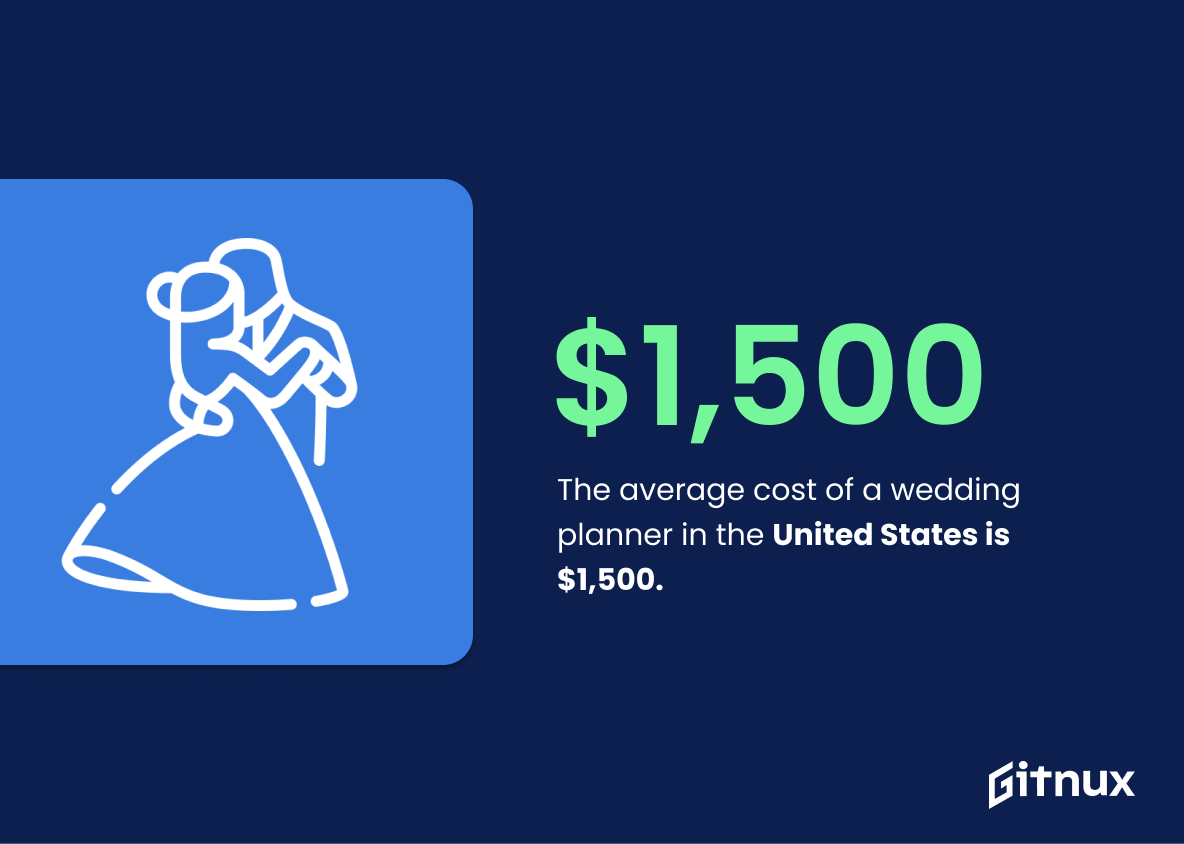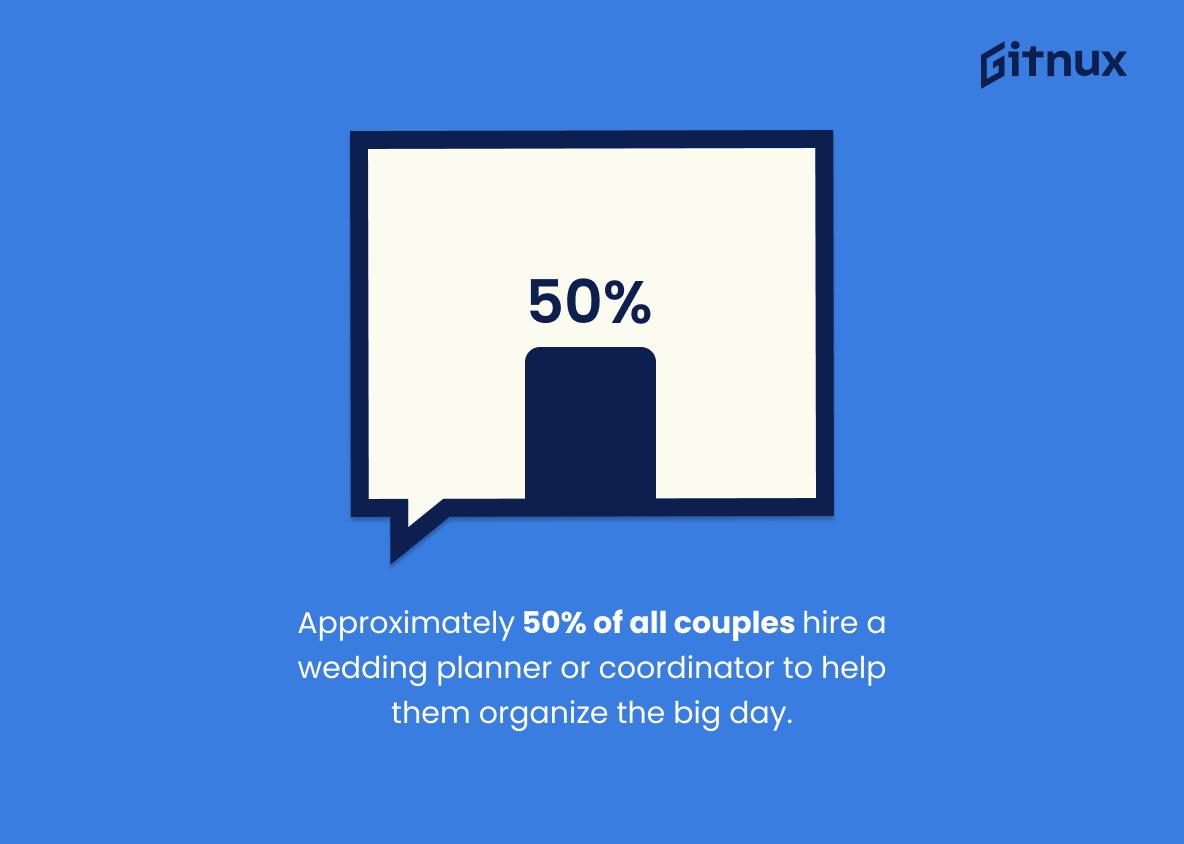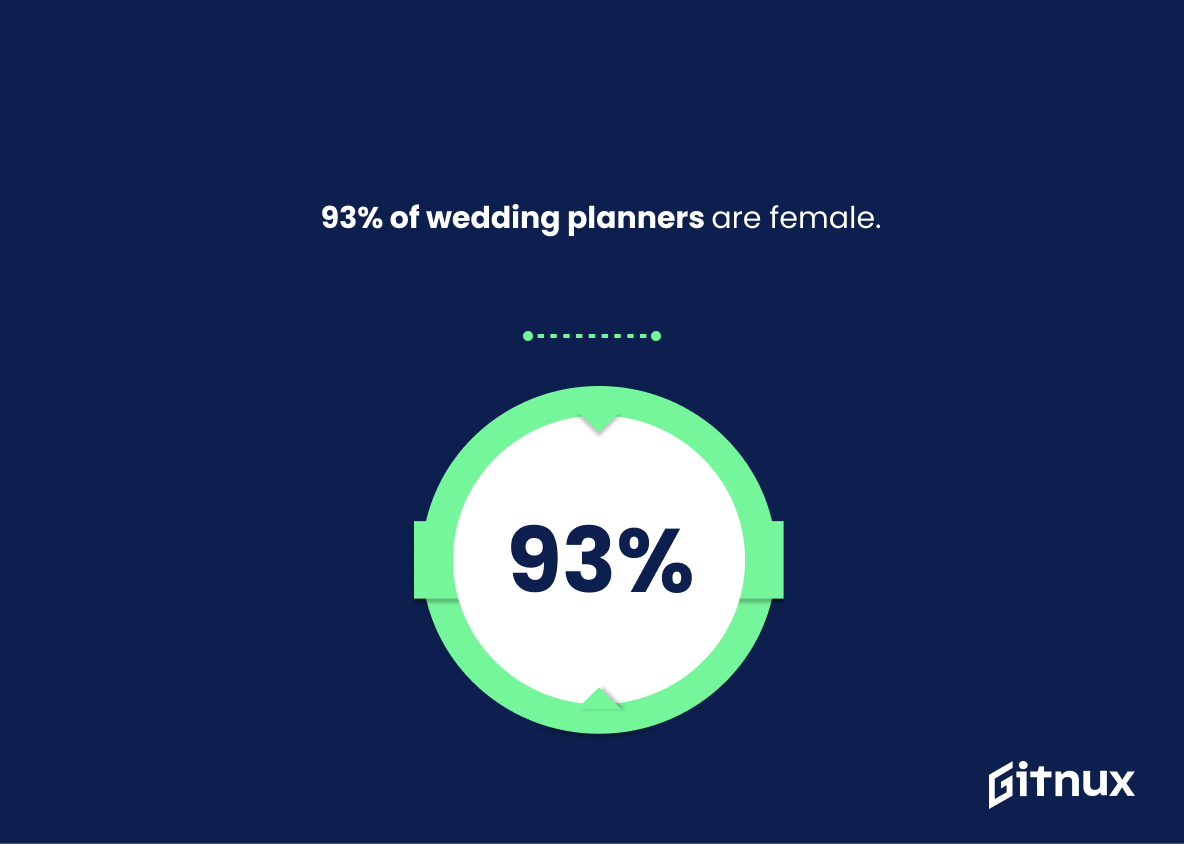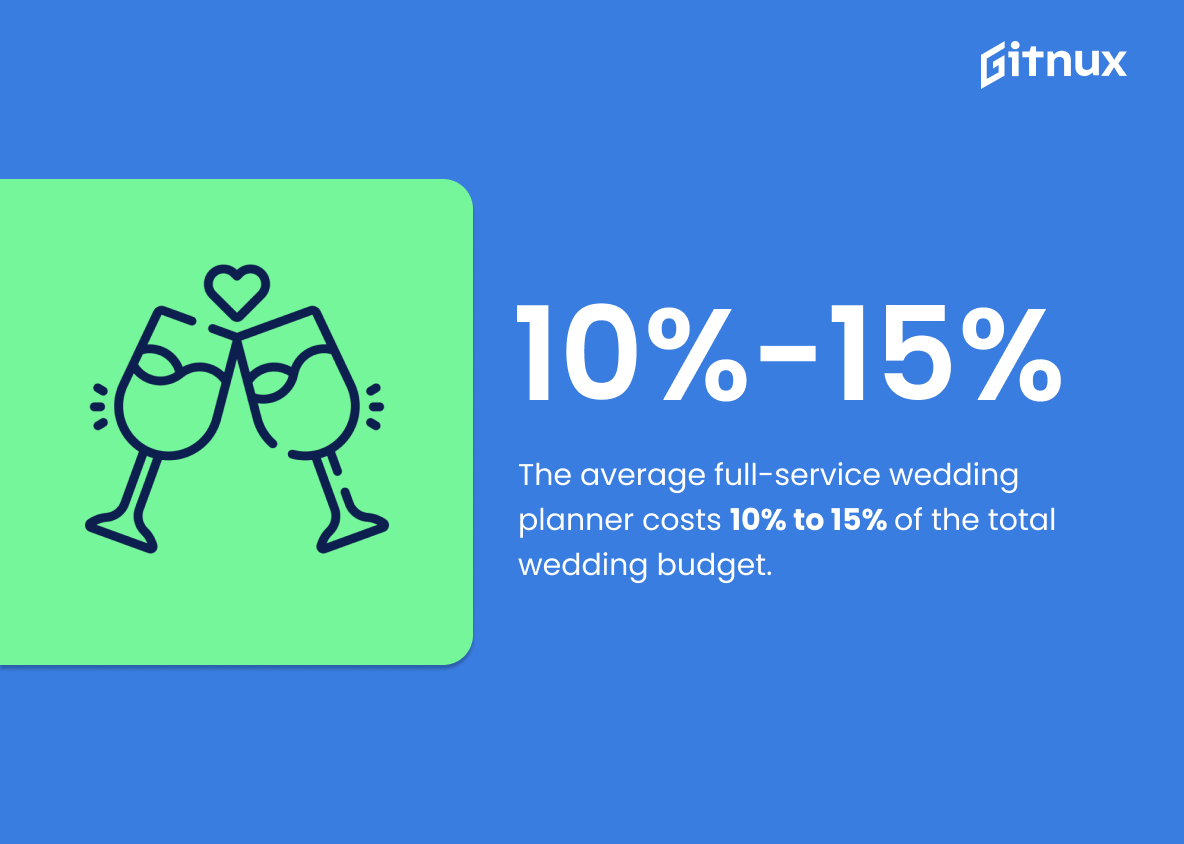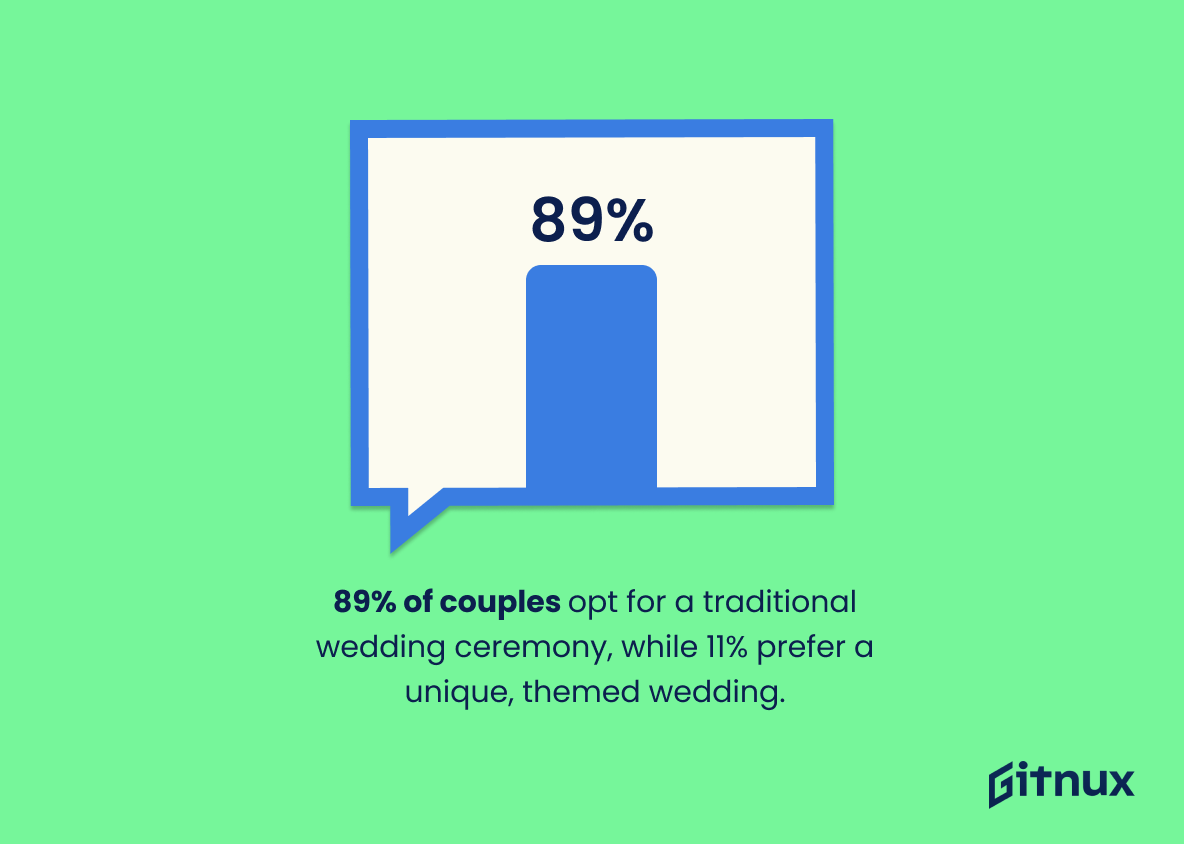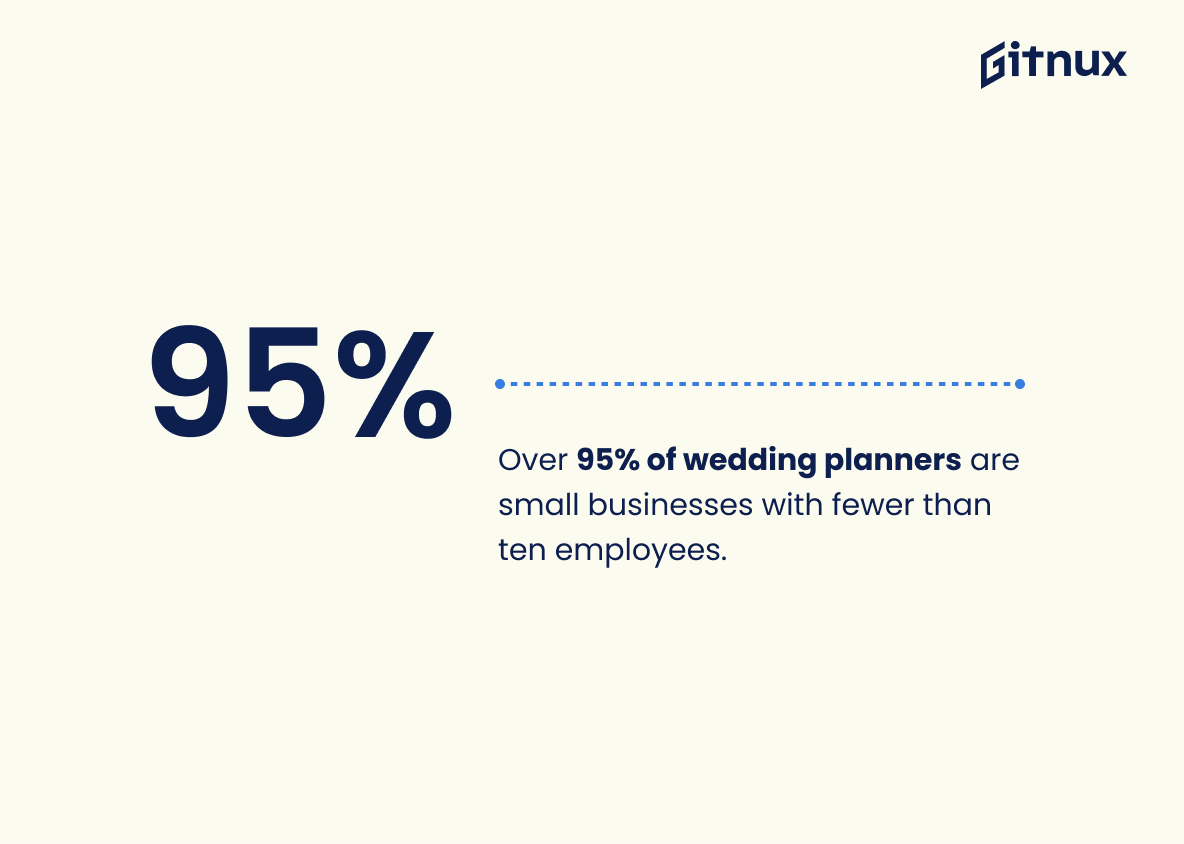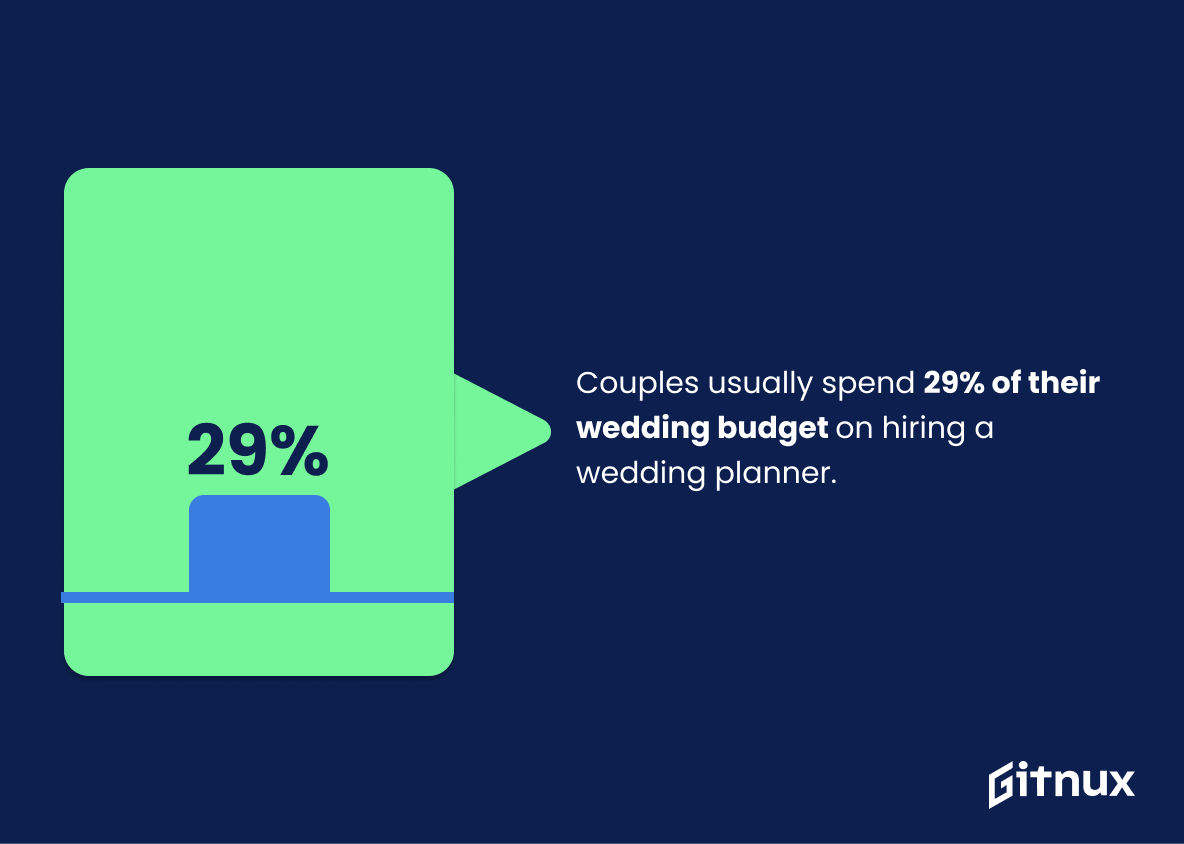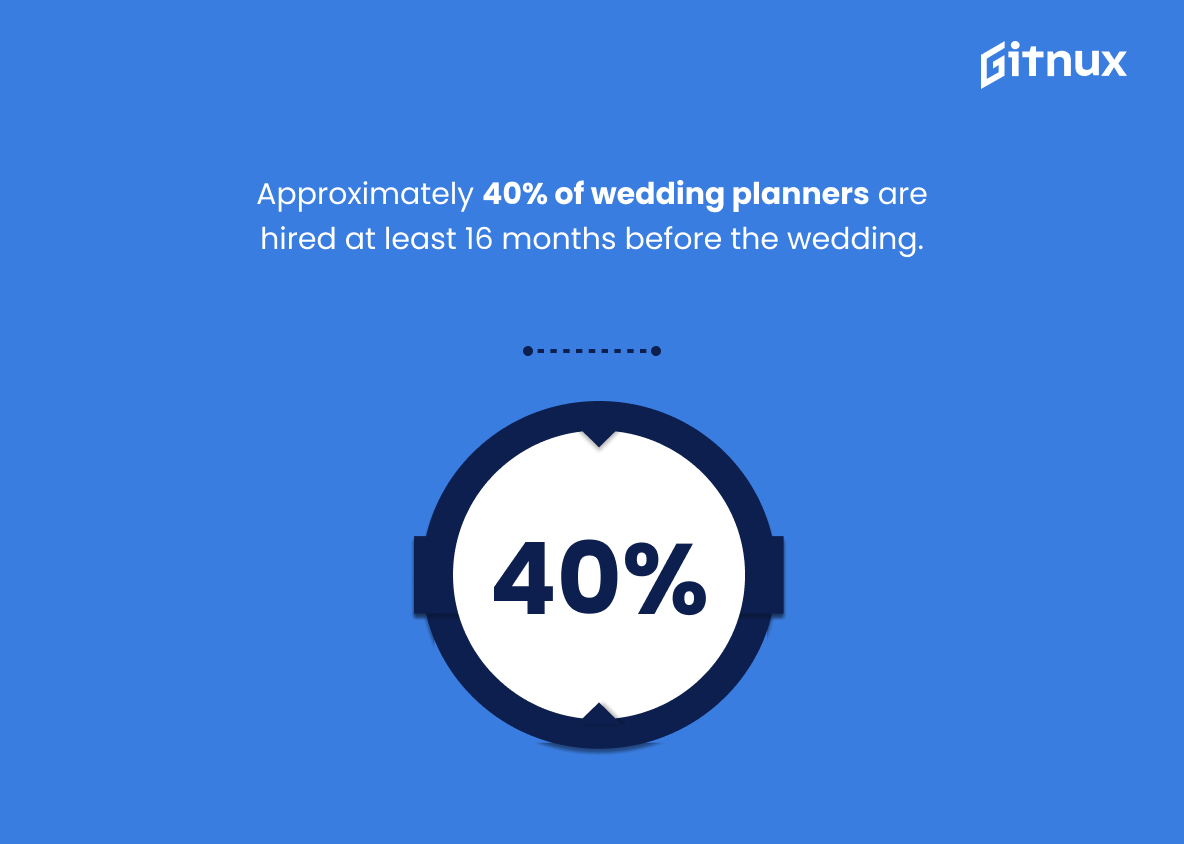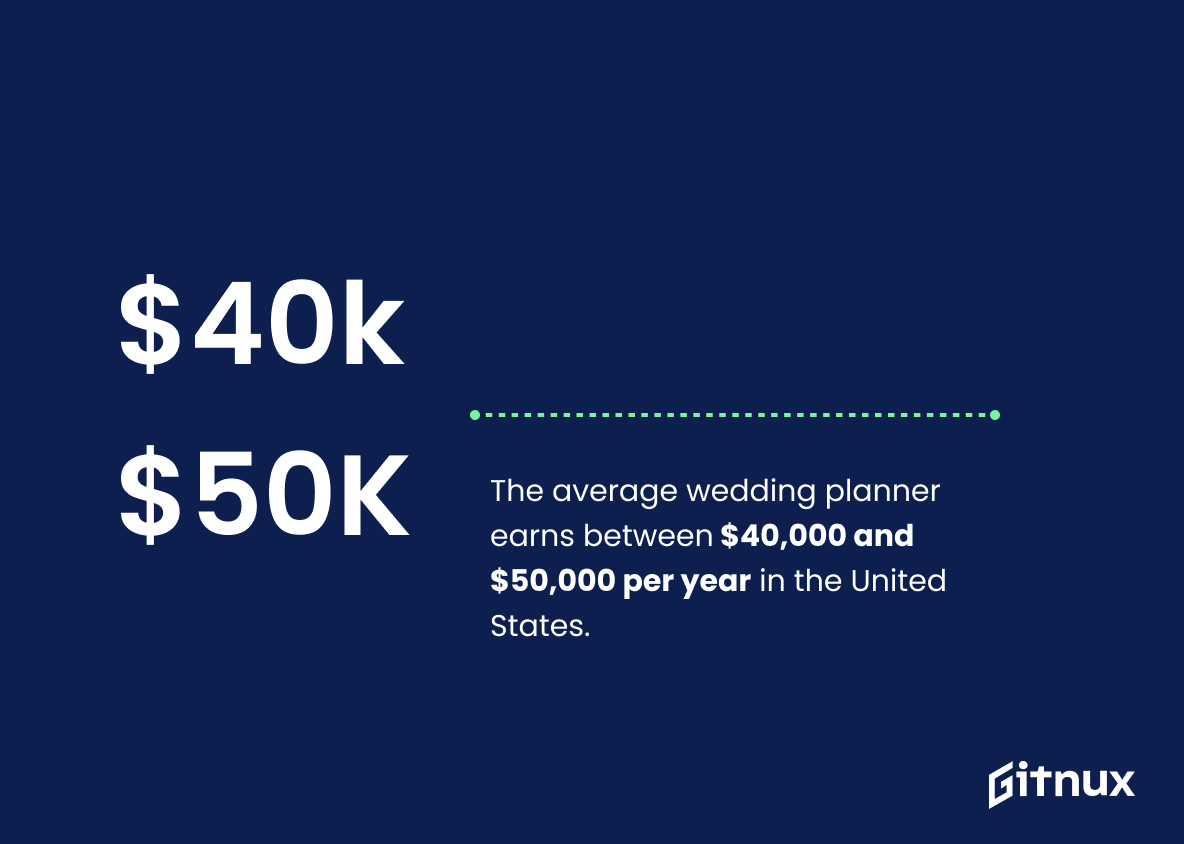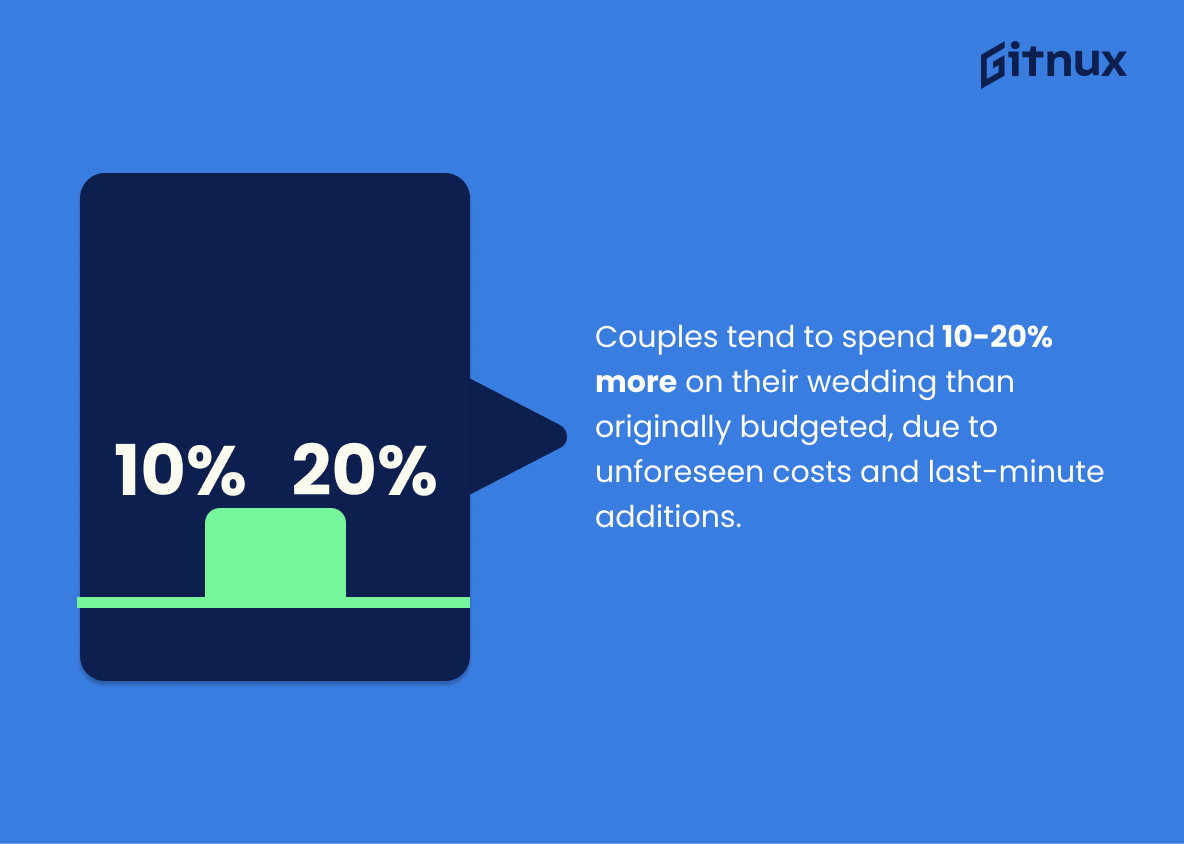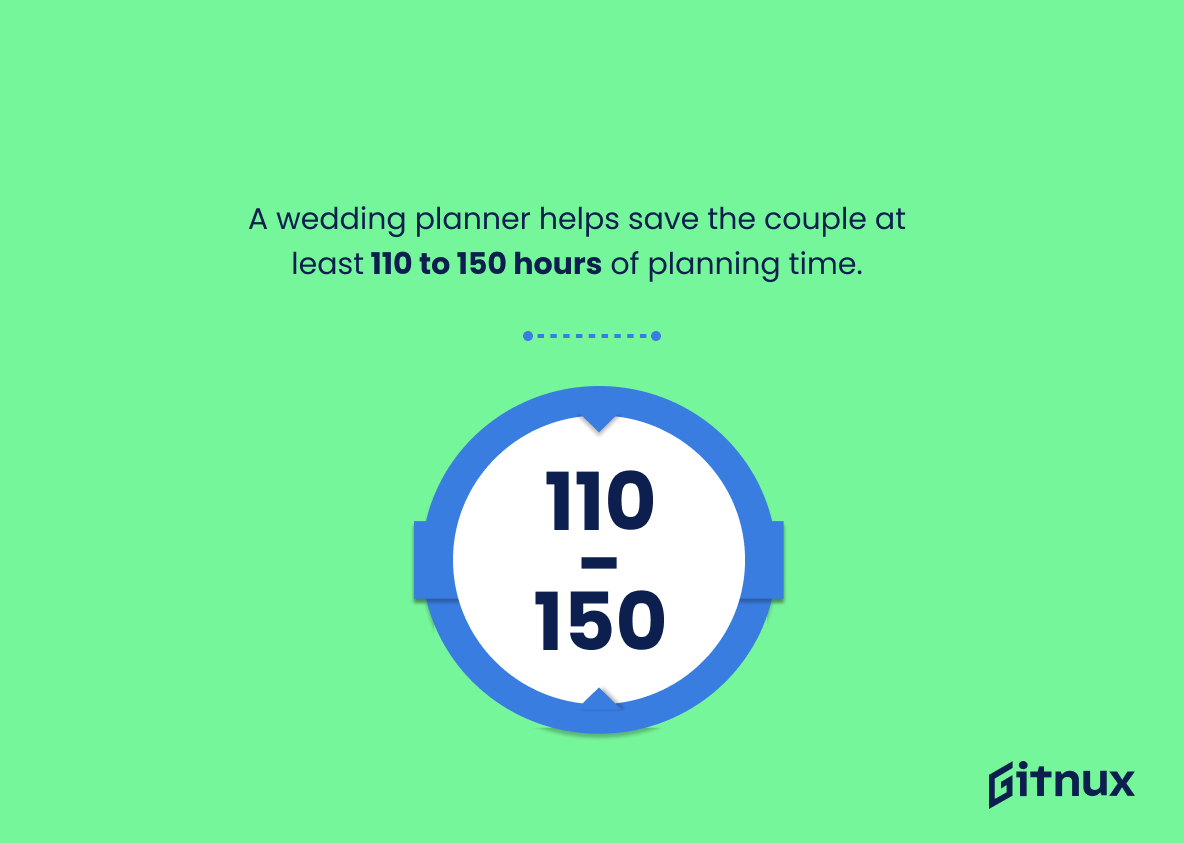Wedding planning is a multi-billion dollar industry that has seen tremendous growth in recent years. According to MarketWatch, the global wedding planning market is expected to reach $78 billion by 2026. In the United States alone, the annual revenue of this industry stands at around $4 billion and there are over 13,000 businesses providing services related to weddings. On average, couples spend 29% of their total budget on hiring a wedding planner or coordinator for help with organizing their big day – an expense which can range from $1,500 up to 15% of the overall cost depending on what type of service they require.
Statistics show that approximately 50% of all couples hire some form of professional assistance when it comes to wedding planning while 93% are female professionals who work as small business owners with fewer than ten employees each year. Furthermore, 60% rely primarily on family and friends for ideas while 68%, according to Hitched UK’s survey results from 2018 , opt for full-service planners who save them 110-150 hours worth of time spent preparing for their special day – something especially important during 2020 where 63.47 % had postponed due COVID pandemic restrictions . Finally 89 percent prefer traditional ceremonies compared 11 percent opting unique themed ones..
These statistics demonstrate just how much demand exists within this sector and why so many people choose professional help when it comes down making sure everything goes smoothly before saying “I do”.
Wedding Planner Statistics Overview
The average cost of a wedding planner in the United States is $1,500.
This statistic is an important indicator of the cost of hiring a wedding planner in the United States. It provides a baseline for couples to consider when budgeting for their wedding and helps them to understand the average cost of a wedding planner. Knowing this information can help couples make informed decisions about their wedding planning needs.
Approximately 50% of all couples hire a wedding planner or coordinator to help them organize the big day.
This statistic is a powerful indicator of the importance of wedding planners and coordinators in the wedding industry. It shows that couples recognize the value of having a professional to help them organize their special day, and that wedding planners and coordinators are an integral part of the wedding planning process. This statistic is a great starting point for a blog post about wedding planner statistics, as it provides a solid foundation for further exploration into the role of wedding planners and coordinators in the wedding industry.
There are over 13,000 wedding planner businesses in the United States.
This statistic is a testament to the sheer size of the wedding planner industry in the United States. It speaks to the fact that there is a large and thriving market for wedding planners, and that there are plenty of opportunities for those looking to get into the business. It also serves as a reminder that the wedding planner industry is a competitive one, and that those looking to succeed in it must be prepared to put in the work.
Around 60% of couples primarily depend on family and friends for wedding planning ideas.
This statistic is significant in the context of a blog post about Wedding Planner Statistics because it highlights the importance of family and friends in the wedding planning process. It shows that couples are relying on their loved ones for advice and guidance when it comes to planning their special day. This statistic also serves as a reminder to wedding planners that they should be prepared to provide support and guidance to couples who are relying on their family and friends for ideas.
93% of wedding planners are female.
This statistic is significant in the context of a blog post about Wedding Planner Statistics because it highlights the gender disparity in the industry. It suggests that the majority of wedding planners are female, which could be indicative of a lack of gender equality in the field. This statistic could be used to spark a discussion about the need for more diversity in the wedding planning industry.
The average full-service wedding planner costs 10% to 15% of the total wedding budget.
This statistic is an important factor to consider when planning a wedding, as it provides an indication of the amount of money that should be allocated to a wedding planner. Knowing this information can help couples make informed decisions about their budget and ensure that they are able to afford the services of a wedding planner.
89% of couples opt for a traditional wedding ceremony, while 11% prefer a unique, themed wedding.
This statistic is a valuable insight into the preferences of couples when it comes to their wedding ceremony. It shows that the majority of couples opt for a traditional wedding ceremony, while a small percentage of couples prefer a unique, themed wedding. This information can be used by wedding planners to better understand the needs of their clients and tailor their services accordingly.
Over 95% of wedding planners are small businesses with fewer than ten employees.
This statistic is a testament to the fact that wedding planning is a highly competitive industry, with the vast majority of businesses being small operations. This highlights the importance of wedding planners being able to differentiate themselves from the competition in order to succeed. It also speaks to the need for wedding planners to be able to effectively manage their resources and maximize their efficiency in order to stay competitive. This is an important point to consider when discussing wedding planner statistics, as it provides insight into the challenges faced by those in the industry.
Couples usually spend 29% of their wedding budget on hiring a wedding planner.
This statistic is a powerful indicator of the importance of wedding planners in the wedding planning process. It shows that couples recognize the value of having a professional to help them plan their special day, and are willing to invest a significant portion of their budget to make sure everything goes smoothly. This statistic is a testament to the value of wedding planners and the services they provide, and is an important piece of information for anyone considering hiring a wedding planner.
Approximately 40% of wedding planners are hired at least 16 months before the wedding.
This statistic is a valuable insight into the planning process of weddings, as it demonstrates that couples are taking the necessary steps to ensure their special day is as perfect as possible. It also shows that couples are taking the time to research and find the right wedding planner for their needs, which is essential for a successful wedding. This statistic is a testament to the importance of wedding planners and the role they play in making a wedding day a success.
Over 50% of couples begin searching for a wedding planner online.
This statistic is a powerful indicator of the importance of having an online presence for wedding planners. It shows that couples are increasingly turning to the internet to find the perfect planner for their special day. This means that wedding planners need to make sure their websites are up-to-date, informative, and easy to navigate in order to capture the attention of potential clients.
Around 60% of couples rely on wedding industry professionals for advice and suggestions.
This statistic is significant in the context of a blog post about Wedding Planner Statistics because it demonstrates the importance of wedding industry professionals in the planning process. It shows that couples are relying on the expertise of these professionals to help them make decisions and create the perfect wedding. This statistic highlights the need for wedding planners to be knowledgeable and experienced in order to provide the best advice and suggestions to couples.
The average wedding planner earns between $40,000 and $50,000 per year in the United States.
This statistic is an important indicator of the potential financial rewards of becoming a wedding planner. It provides a benchmark for those considering a career in the field, and can help them to make an informed decision about their future. Additionally, it can be used to compare the earning potential of wedding planners in different parts of the country, and to assess the overall value of the profession.
Couples tend to spend 10-20% more on their wedding than originally budgeted, due to unforeseen costs and last-minute additions.
This statistic is a crucial reminder for couples to plan for the unexpected when budgeting for their wedding. It highlights the importance of having a financial cushion to cover any additional costs that may arise, such as last-minute additions or unforeseen expenses. Knowing this ahead of time can help couples avoid any financial surprises and ensure their wedding day is as stress-free as possible.
A wedding planner helps save the couple at least 110 to 150 hours of planning time.
This statistic is a powerful testament to the value of a wedding planner. It demonstrates that a wedding planner can save a couple a significant amount of time, allowing them to focus on other aspects of their wedding and enjoy the planning process. This statistic is an important reminder that a wedding planner can be a valuable asset in making a wedding day a success.
In 2020, the number of weddings postponed due to the COVID-19 pandemic increased the demand for wedding planners’ services, with 63.47% of couples in the US postponing their nuptials.
This statistic is a testament to the impact of the COVID-19 pandemic on the wedding industry, and how wedding planners have had to adjust their services to meet the needs of couples who have had to postpone their nuptials. It is a reminder of the importance of wedding planners in helping couples navigate the complexities of planning a wedding during a pandemic, and how their services are in high demand.
Conclusion
The wedding planning industry is a booming business, with the global market expected to reach $78 billion by 2026 and annual revenue in the United States estimated at around $4 billion. On average, couples spend 29% of their budget on hiring a wedding planner or coordinator for full-service planning or day-of coordination. Over 50% of couples begin searching for a wedding planner online and 60% rely on professionals for advice and suggestions. Wedding planners are mostly female (93%) small businesses (95%), earning between $40,000-$50,000 per year in the US. In 2020 due to COVID-19 pandemic 63.47 % of weddings were postponed which increased demand for services provided by professional wedding planners who help save time as well as money – 110 to 150 hours spent on organizing an event plus 10-20 percent more than originally planned budgeted due unforeseen costs and last minute additions .
References
0. – https://www.brides.com
1. – https://www.commitmentconnection.com
2. – https://www.hizonscatering.com
3. – https://www.wedding.report
4. – https://www.ibisworld.com
5. – https://www.salary.com
6. – https://www.theknot.com
7. – https://www.wedinsights.com
8. – https://www.huffpost.com
9. – https://www.weddingwire.com
10. – https://www.marketwatch.com
11. – https://www.nace.net
12. – https://www.hitched.co.uk
